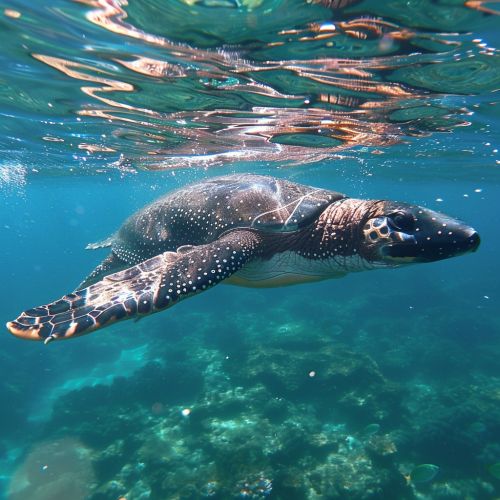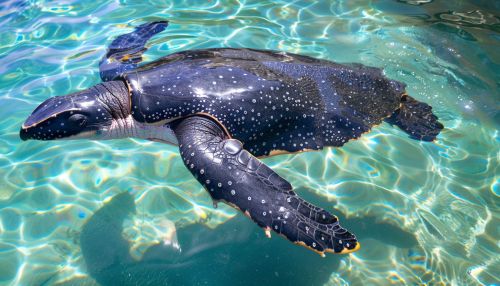Leatherback Turtle
Introduction
The leatherback turtle (Dermochelys coriacea) is the largest of all living turtles and is the fourth-heaviest modern reptile behind three crocodilians. It is the only living species in the genus Dermochelys. It can easily be differentiated from other modern sea turtles by its lack of a bony shell. Instead, its carapace is covered by skin and oily flesh.


Physical Characteristics
Leatherback turtles have a unique set of physical characteristics that set them apart from other turtle species. They are known for their large size, with adults typically reaching 1.83–2.2 meters (6.0–7.2 ft) in total length and weighing between 250 and 700 kilograms (550 and 1,540 lb). The largest ever found, however, was over 3 meters (9.8 ft) from head to tail, including extended flippers, and weighed 916 kilograms (2,019 lb).
Habitat and Distribution
Leatherback turtles have the widest global distribution of all reptile species. They can be found in the Atlantic, Pacific, and Indian Oceans, as well as the Mediterranean Sea. They prefer to stay in open oceans, but are also frequently found in coastal waters. Unlike other sea turtles, leatherbacks are capable of withstanding colder waters, and have been spotted as far north as Alaska and Canada in the Pacific Ocean.
Diet
The diet of the leatherback turtle is primarily composed of jellyfish. They also consume other soft-bodied organisms such as tunicates and cephalopods. Their preference for jellyfish has led to many leatherbacks dying from ingesting plastic bags and other plastic debris, which they mistake for their prey.
Reproduction
Leatherback turtles have a complex reproductive cycle. Females return to the same beach where they were born to lay their eggs, a phenomenon known as natal homing. The breeding season varies depending on the location, but generally occurs between February and July.
Conservation Status
The leatherback turtle is listed as Vulnerable by the IUCN, but many subpopulations are critically endangered. The major threats to leatherback turtles include bycatch from fishing, marine pollution, coastal development, and climate change.
